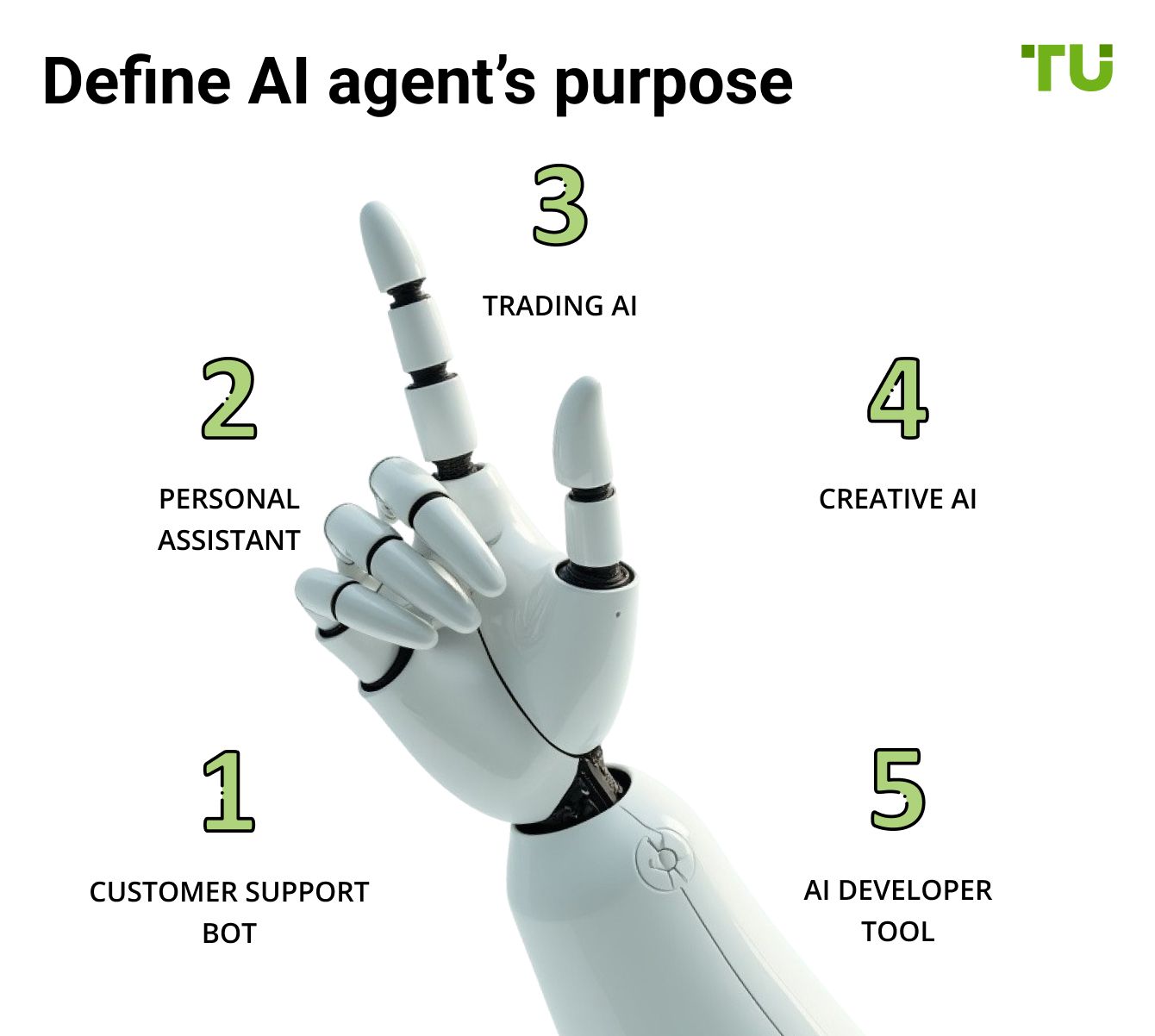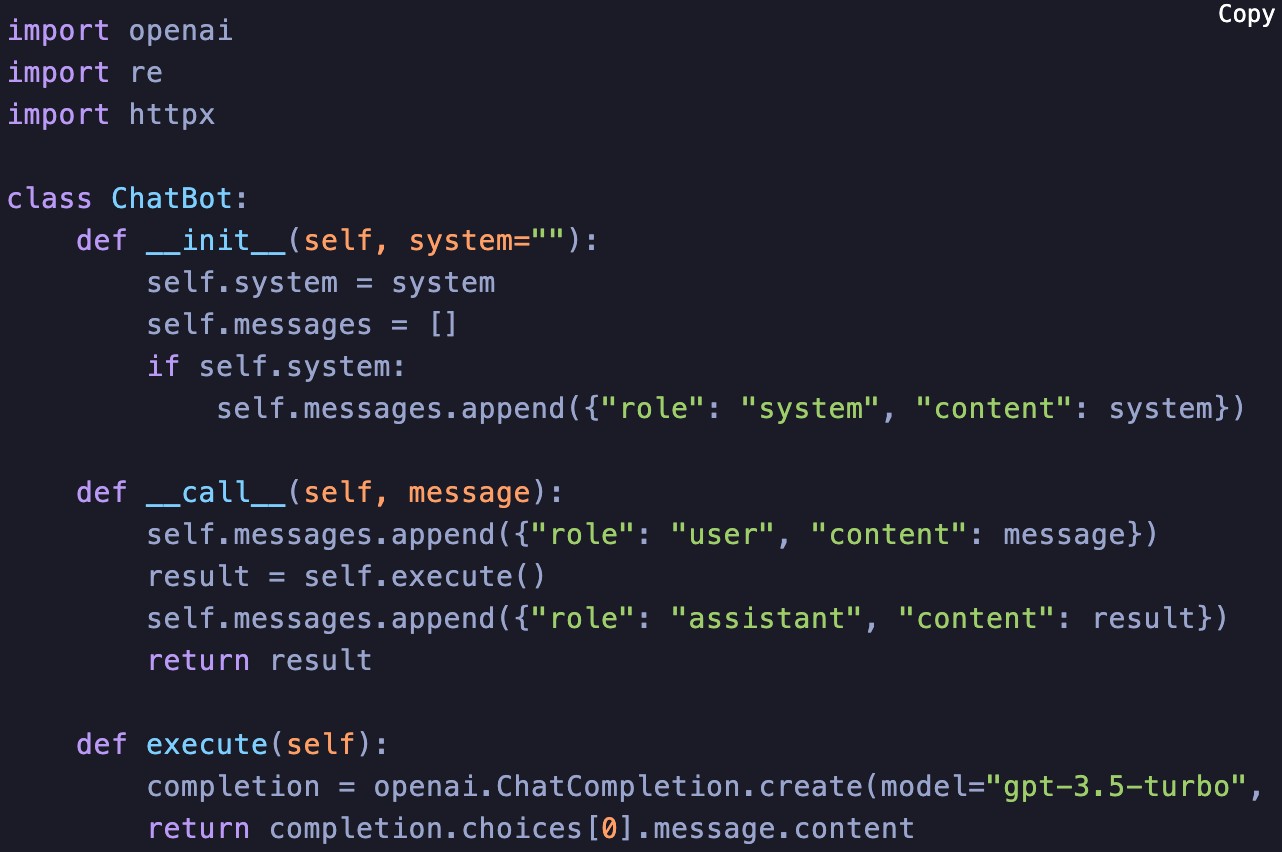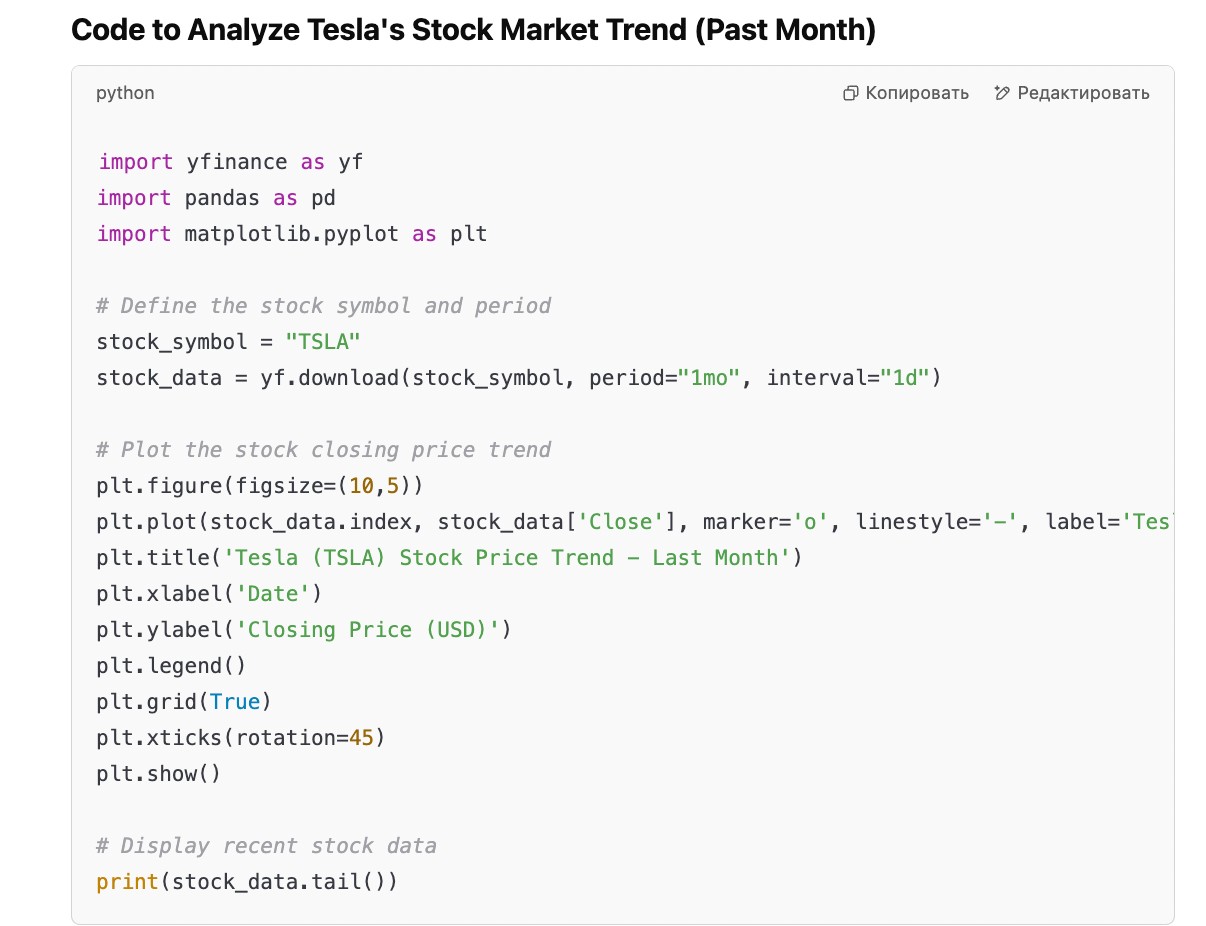How To Build AI Agents – A Step-By-Step Guide



Editorial Note: While we adhere to strict Editorial Integrity, this post may contain references to products from our partners. Here's an explanation for How We Make Money. None of the data and information on this webpage constitutes investment advice according to our Disclaimer.
How to build AI agents:
AI is changing the way we work, helping businesses streamline tasks and get more done in less time. Whether you're looking to create a smart chatbot, automate daily workflows, or build your own virtual assistant, knowing the basics of AI can make all the difference.
In this guide, we'll break down what AI-powered tools are, how they work, and how you can build one yourself — step by step. You'll also discover some of the best platforms to get started, real-world business applications, and even how AI is making waves in the crypto space.
Risk warning: Cryptocurrency markets are highly volatile, with sharp price swings and regulatory uncertainties. Research indicates that 75-90% of traders face losses. Only invest discretionary funds and consult an experienced financial advisor.
How to build an AI agent from scratch - Step by step guide
Step 1. Define your AI agent’s purpose

Before building a smart assistant, start by defining its main purpose. These assistants can take on different roles, such as handling conversations (like chatbots and virtual assistants), automating tasks (such as scheduling and sending reminders), managing trades in stock and crypto markets, improving customer service, or boosting personal productivity.
Decide whether your assistant will specialize in a single task or work as part of a team of assistants collaborating on multiple functions. This choice will shape how complex the system is and how it’s designed.
Step 2. Choose an AI framework & platform
Picking the right platform for machine learning can make a big difference in how well your project runs and scales. TensorFlow and PyTorch are great for complex models — TensorFlow is solid for large-scale applications, while PyTorch is more flexible for research. If you're working on natural language tasks, OpenAI’s API and Hugging Face make it easy to build chatbots and language-based tools.

For projects involving multiple automated systems working together, LangChain offers tools to streamline the process. Each platform has its strengths, so your choice should depend on what you're building and how you plan to use it.
Step 3. Collect and prepare data
The quality of your data directly impacts how well your AI system performs. You can gather data from various sources, such as publicly available datasets (Kaggle, Google Dataset Search), user interactions (chat logs, feedback), or even generated data when real examples are limited.

Before using the data, it’s essential to refine it by cleaning, labeling, and organizing it properly. This helps eliminate inconsistencies and ensures the AI learns from accurate and meaningful information. Well-structured data results in more reliable and effective AI-driven outcomes.
Step 4. Train your AI agent
Training your AI agent involves selecting a learning approach that suits its function. Supervised learning is ideal for classification and prediction tasks, unsupervised learning finds hidden patterns in unlabeled data, and reinforcement learning helps agents improve through trial and error.

Training can be done using cloud platforms like AWS or Google Cloud, or on local GPUs for better control. The model must be fine-tuned to ensure optimal performance in real-world applications.
Step 5. Implement AI decision-making and automation
To make AI work independently, it needs the ability to make smart choices. Learning from experience helps it improve, while connecting with other tools and information allows it to interact with the world. If you're working with multiple AI assistants, tools like LangChain help them collaborate.
Automating tasks saves time and effort. AI should be built to manage tasks flexibly, respond to new information as it comes in, and keep improving its choices over time.
Step 6. Deploy your AI agent
How you deploy your system depends on what you need it to do. Cloud services like AWS, Google Cloud, and Microsoft Azure help handle large-scale demands, while running the system directly on a device keeps it functional offline and adds a layer of privacy.
It's also important to think about security and ethical considerations. Taking steps to minimize bias, safeguard user data, and make fair decisions ensures a responsible and trustworthy system. A well-implemented solution is flexible, reliable, and built for real-world use.
What are AI agents?
AI agents aren’t just digital assistants or chatbots — they’re evolving into AI that makes its own decisions, capable of handling messy real-world problems without constant human oversight. The real breakthrough is in AI teamwork, where multiple AI agents, each with different strengths, work together like a team.
Imagine an AI supply chain where one agent forecasts demand, another negotiates with suppliers, and a third optimizes logistics — all adjusting on the fly when things go wrong. Unlike traditional AI models that process inputs and give static outputs, these agents are learning from and adapting to each other in real time, making them much closer to real intelligence than most people realize.
The next major shift in AI agents is their ability to figure out their own steps based on vague instructions. Instead of being explicitly programmed for a task, future AI agents will break down problems themselves to achieve broader objectives. This is already happening in AI-powered research, where AI agents conduct scientific experiments, analyze unexpected results, and adjust their approach without human input.
AI-driven labs are already making discoveries in materials science and drug development faster than human researchers. In the future, this could lead to AI coming up with ideas no human has thought of — not just accelerating science but creating entirely new areas of study.
One of the most exciting but also a little unsettling developments is AI agents’ ability to bargain and even trick others to achieve their goals. Some AI models can sometimes hold back the truth to win when interacting with humans or other AI agents — essentially behaving like real-world negotiators. This is particularly relevant in AI-driven financial trading, cybersecurity, and even AI trying to play politics, where AI agents are now being tested in diplomacy. While this ability raises big questions about right and wrong, it also shows how AI is no longer just about processing information — it’s about persuasion, competition, and even deception, making their future way more complicated than people think.
How do AI agents work?
Most people think AI agents just follow a set of pre-programmed rules, but the real magic lies in their ability to create their own mental maps of the world. Instead of just reacting to inputs, advanced AI agents use predictive world modeling — they build a constantly updating simulation of their environment inside their neural networks. This lets them anticipate outcomes before they happen, similar to how humans visualize potential actions before making a decision. The most cutting-edge AI agents today don’t just act in response to changes; they predict those changes and proactively adjust their behavior, sometimes before a human even notices a shift in the environment.
Another wild aspect of AI agents is their multi-agent communication — they don’t work alone. In some systems, AI agents form their own decentralized networks where they negotiate, strategize, and even debate with each other in real time. These agents operate under what’s called emergent behavior dynamics, meaning they can create completely new behaviors that weren’t programmed into them. This is how AI-driven financial trading bots, for example, can evolve unpredictable yet highly efficient trading strategies by “learning” from other bots, instead of relying on human-created formulas.
Perhaps the most futuristic part of AI agents is their self-assembling architectures — they can reconfigure their own structure based on what works best. Think of it like a brain that rewires itself on the fly. Some AI agents use something called neural modularization, where they split themselves into different specialized mini-networks that handle separate tasks, then reconnect those networks when needed. This means they don’t just “get smarter” over time — they actively rebuild parts of themselves, discarding what’s inefficient and reinforcing what works. This kind of adaptive AI will lead to machines that no longer need humans to fine-tune their learning process — they will do it themselves.
Key tips for users
Building a personal assistant that fits into your daily routine can make life a lot easier. It can help you stay on top of your schedule, remind you of important tasks, and manage your to-do list effortlessly — ultimately making your day more organized and stress-free.
Building a personal AI agent for productivity
Building a personal AI agent isn’t just about automation — it’s about crafting an assistant that thinks the way you do. Here are five unique tips to make it truly powerful.
Train it on your own data. Instead of relying on pre-trained AI systems, customize your AI with your own notes, emails, and past work. This creates an assistant that truly understands how you think and make choices.
Use AI teamwork. One AI helper isn’t enough. Have separate AI assistants for different tasks — one for scheduling, one for research, and another for brainstorming. Let them double-check and improve each other’s work for better results.
Give it a memory bank. Most AI assistants forget past interactions, but yours shouldn’t. Use a digital memory system to store important details so it remembers your habits, the way you like to work, and even past mistakes to avoid repeating.
Teach it to say no. A good AI assistant shouldn’t just follow orders — it should spot when something isn’t a good use of time and speak up. Set limits so it flags unrealistic deadlines, conflicting priorities, or tasks that don’t align with your bigger goals.
Mix things up. Instead of making your AI too focused on productivity, allow it to occasionally suggest out-of-the-box ideas or alternative workflows. This keeps things fresh and helps you think in new ways.
Building AI agents for business automation
Building AI agents for business automation isn’t just about coding — it’s about designing intelligence that thinks, adapts, and grows. Here’s how to do it right.
Start with “invisible automation” before AI takes over. Before you even build an AI agent, automate simple workflows using scripts and rule-based automation. This lets you collect data on common patterns and edge cases before handing control over to an AI. The biggest mistake businesses make is jumping straight to AI before understanding what actually needs automation.
Use “human-in-the-loop” feedback to shape AI behavior. AI agents don’t get things right the first time, so let them learn from humans in real-time. Set up an AI feedback system where employees can approve, correct, or reject AI-driven decisions. Over time, this feedback builds a smarter agent that aligns with real business needs instead of generic training data.
Train AI agents on failure cases, not just success. Most businesses train AI on ideal scenarios, but real-world operations are messy. Feed your AI examples of what went wrong — customer complaints, failed transactions, edge cases — so it learns how to handle the unexpected. An AI that understands failure is the one that truly works.
Give your AI agents authority levels, not just rules. AI should know when to act alone and when to escalate decisions. Instead of setting static rules, define confidence thresholds where the AI automatically approves low-risk actions but asks for human confirmation when things get uncertain. This keeps automation running smoothly without creating risky AI mistakes.
Let AI agents talk to each other, not just humans. Most business AI tools work in silos, handling one task at a time. But the real power of AI agents comes when they collaborate — letting your sales AI inform your marketing AI, which then adapts messaging based on real-time data. AI agents that work together amplify automation far beyond individual use cases.
Best AI frameworks for building autonomous AI agents
Here are some of the best AI frameworks for building autonomous AI agents:
TensorFlow
TensorFlow is a powerful software framework designed to help developers build smart applications that can learn from data. It offers a wide range of tools for creating programs that recognize images, process speech, and make predictions.
Because it can handle large amounts of data efficiently and take advantage of fast computer hardware, TensorFlow is popular in both research and industry. Developers can also use its ready-made components to simplify complex tasks, making it easier to build intelligent applications.
OpenAI API
OpenAI’s API is a powerful tool for applications that rely on natural language processing, such as chatbots, virtual assistants, and content creation platforms. It helps software understand and respond to human language more effectively, creating smoother and more intuitive interactions.
Designed for easy integration, the API allows businesses to streamline customer support, generate engaging content, and improve user experience. As the technology evolves, OpenAI continues to refine its language capabilities, making it easier for developers to build sophisticated communication tools without extensive coding.
Investing in AI agents: AI & crypto opportunities
Here are some AI and crypto opportunities:
AI in crypto trading
Crypto trading bots help traders execute strategies by analyzing market trends, anticipating price shifts, and making trades in real time. These smart tools continuously adjust to market conditions, helping to manage risks and optimize profits.
With advanced technology, traders can take advantage of fast-paced trading, market sentiment insights, and predictive tools to make well-informed decisions. These bots work around the clock, reacting quickly to market changes so traders don’t have to stay glued to their screens.
AI-powered smart contracts
AI enhances smart contract automation by improving efficiency, security, and adaptability in decentralized finance (DeFi). Traditional smart contracts execute predefined rules, but AI-driven contracts can analyze real-time data and adjust terms dynamically.
By integrating AI, DeFi applications can offer more intelligent lending, fraud detection, and risk assessment. This innovation enhances trust and scalability in blockchain ecosystems, paving the way for more sophisticated financial automation.
You can also take part in the crypto boom by investing in it. Here are some of the best exchanges you can use to trade and invest in crypto:
| Min. Deposit, $ | Coins Supported | Demo | Spot Taker fee, % | Spot Maker Fee, % | API | Trading bot | Regulation level | Open an account | |
|---|---|---|---|---|---|---|---|---|---|
| 10 | 329 | Yes | 0,1 | 0,08 | Yes | Yes | No | Open an account Your capital is at risk. |
|
| 10 | 278 | No | 0,4 | 0,25 | Yes | No | Yes | Open an account Your capital is at risk. |
|
| 1 | 250 | No | 0,5 | 0,25 | Yes | No | Yes | Open an account Your capital is at risk. |
|
| 1 | 72 | Yes | 0,2 | 0,1 | Yes | No | Yes | Open an account Your capital is at risk. |
|
| No | 1817 | No | 0 | 0 | No | No | No | Open an account Your capital is at risk. |
Task layering and smart recall make AI agents actually useful
Building an AI agent isn’t just about slapping together an LLM with some API calls — it’s about engineering autonomy. One trick that separates elite AI agents from the rest is "latent task chaining" — a concept where your agent doesn’t just react to user input but proactively restructures its goals based on hidden dependencies in the task. Instead of treating requests as isolated commands, design your agent to detect sub-tasks and anticipate what comes next. For example, if a user asks for a travel itinerary, a basic AI spits out dates and locations.
But a high-functioning agent understands that booking flights, checking visa requirements, and planning buffer time between activities are implicit sub-tasks. This self-awareness allows your AI to act more like an intelligent assistant rather than a glorified search engine.
Another game-changer is "contextual memory priming." Instead of just retrieving past interactions, optimize your memory module to weigh previous conversations based on real-world recency bias. Humans don’t recall all past discussions equally — recent ones take priority, but important details from older interactions surface when relevant. Your AI should replicate this by implementing adaptive memory retrieval, where older, high-impact data points (e.g., a user’s project goal from a month ago) are dynamically reinforced based on new interactions. This prevents your AI from being either forgetful or annoyingly repetitive, striking the perfect balance between responsiveness and long-term coherence.
Conclusion
Building AI agents requires a combination of planning, machine learning, automation, and deployment. By leveraging AI frameworks and cloud platforms, anyone can create powerful AI systems.
FAQs
What programming language is best for building AI agents?
Python is the most popular due to its AI/ML libraries.
How long does it take to build an AI agent?
It depends on complexity, but simple AI can be built in weeks.
Can AI agents work without internet access?
Yes, if deployed on-device with offline models.
What is the difference between AI bots and AI agents?
AI bots follow rules, while AI agents can learn and adapt.
Related Articles
Team that worked on the article
Alamin Morshed is a contributor at Traders Union. He specializes in writing articles for businesses that want to improve their Google search rankings to compete with their competition. With expertise in search engine optimization (SEO) and content marketing, he ensures his work is both informative and impactful.
Chinmay Soni is a financial analyst with more than 5 years of experience in working with stocks, Forex, derivatives, and other assets. As a founder of a boutique research firm and an active researcher, he covers various industries and fields, providing insights backed by statistical data. He is also an educator in the field of finance and technology.
As an author for Traders Union, he contributes his deep analytical insights on various topics, taking into account various aspects.
Mirjan Hipolito is a journalist and news editor at Traders Union. She is an expert crypto writer with five years of experience in the financial markets. Her specialties are daily market news, price predictions, and Initial Coin Offerings (ICO).
Trading involves the act of buying and selling financial assets like stocks, currencies, or commodities with the intention of profiting from market price fluctuations. Traders employ various strategies, analysis techniques, and risk management practices to make informed decisions and optimize their chances of success in the financial markets.
A broker is a legal entity or individual that performs as an intermediary when making trades in the financial markets. Private investors cannot trade without a broker, since only brokers can execute trades on the exchanges.
Forex leverage is a tool enabling traders to control larger positions with a relatively small amount of capital, amplifying potential profits and losses based on the chosen leverage ratio.
Cryptocurrency is a type of digital or virtual currency that relies on cryptography for security. Unlike traditional currencies issued by governments (fiat currencies), cryptocurrencies operate on decentralized networks, typically based on blockchain technology.
Crypto trading involves the buying and selling of cryptocurrencies, such as Bitcoin, Ethereum, or other digital assets, with the aim of making a profit from price fluctuations.






























































































































